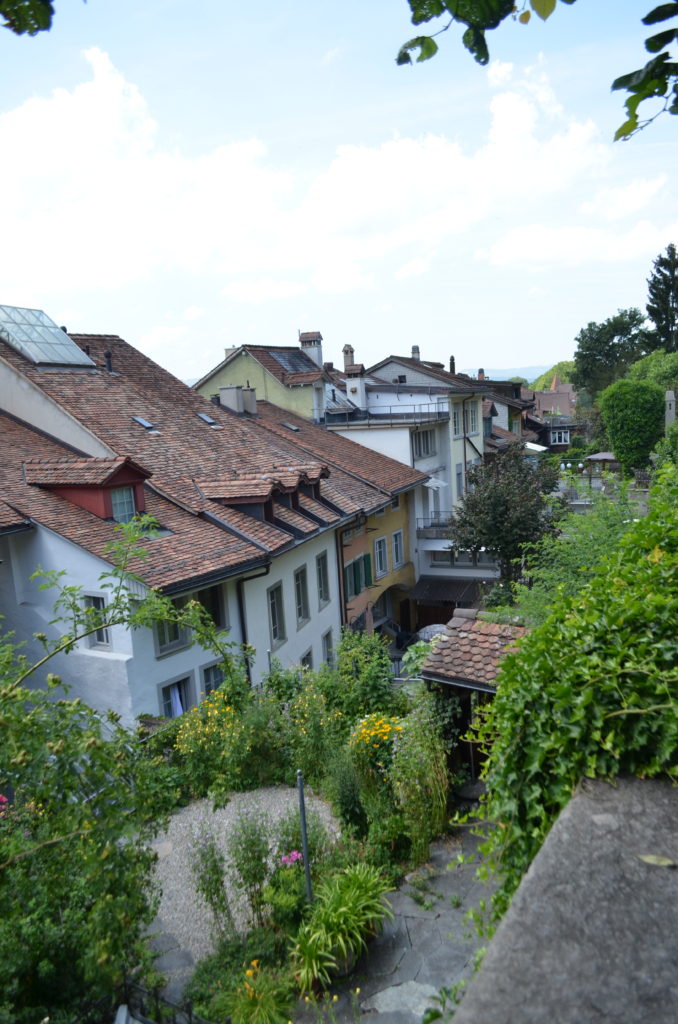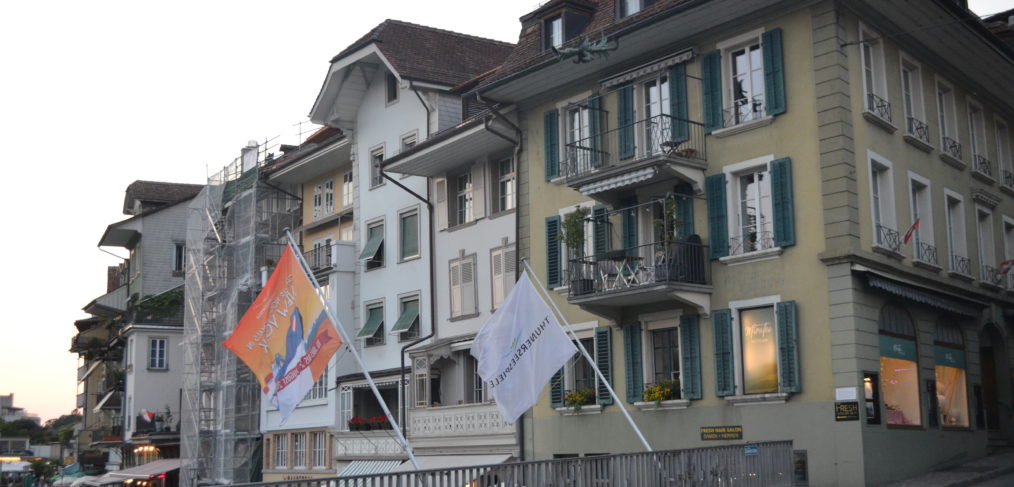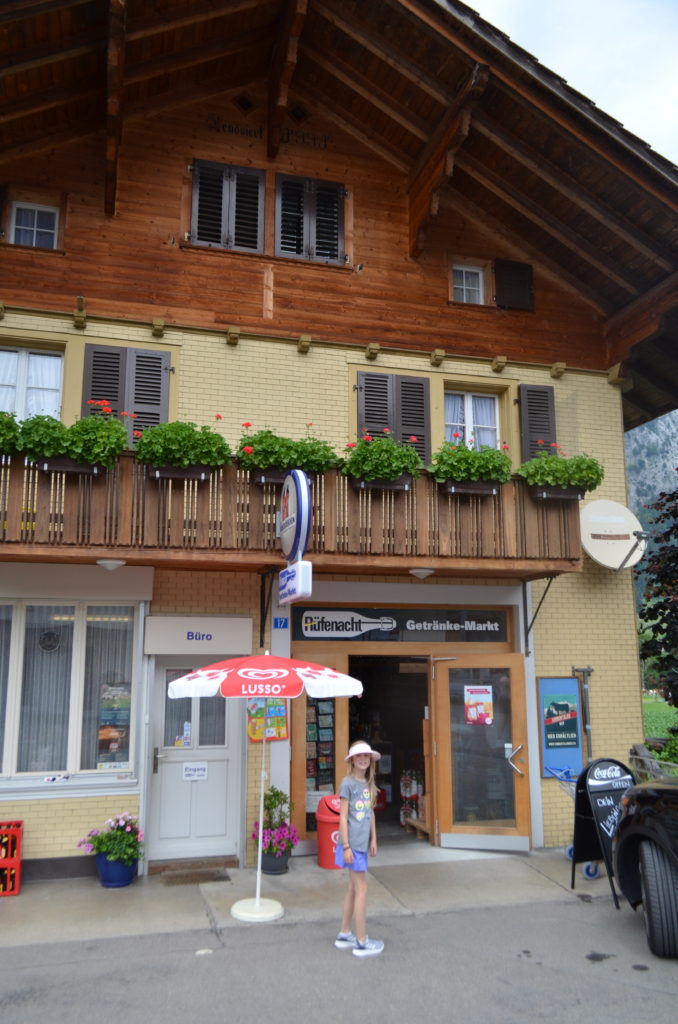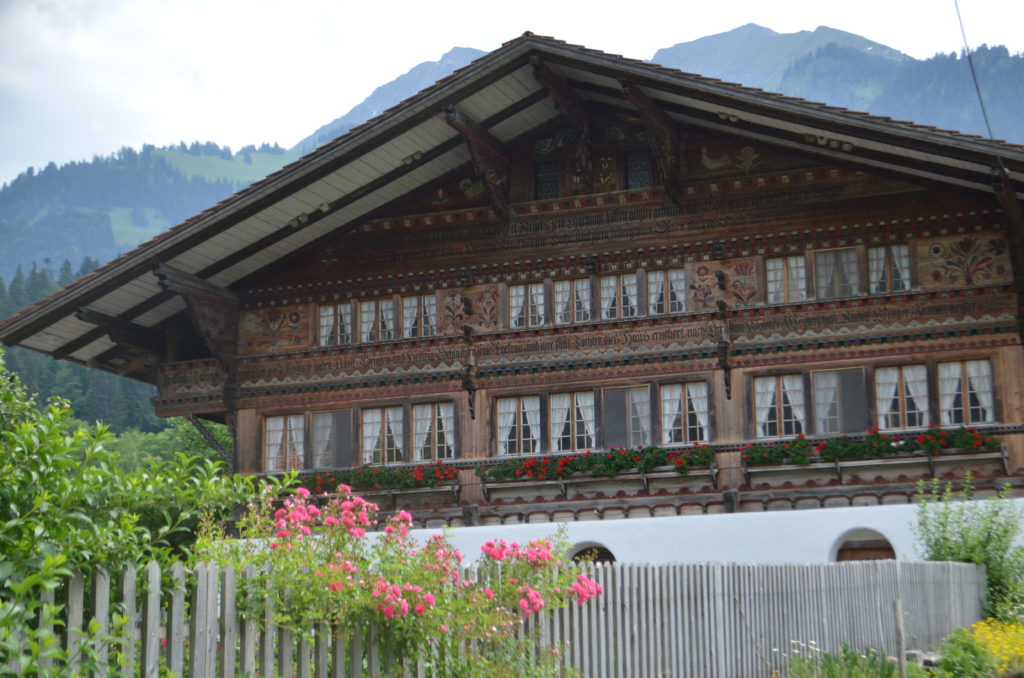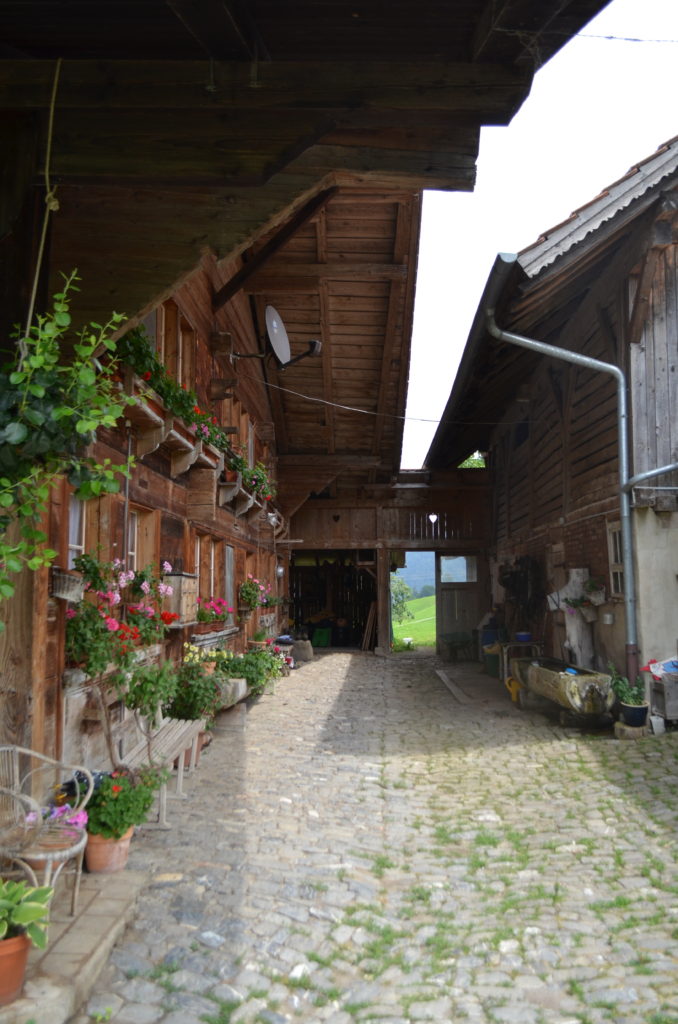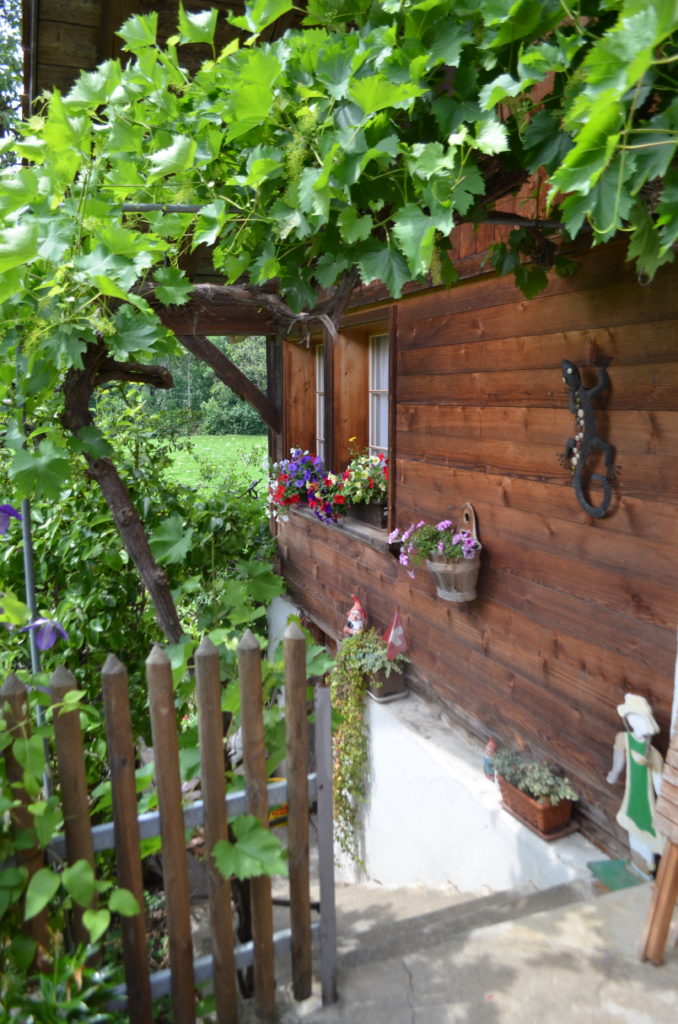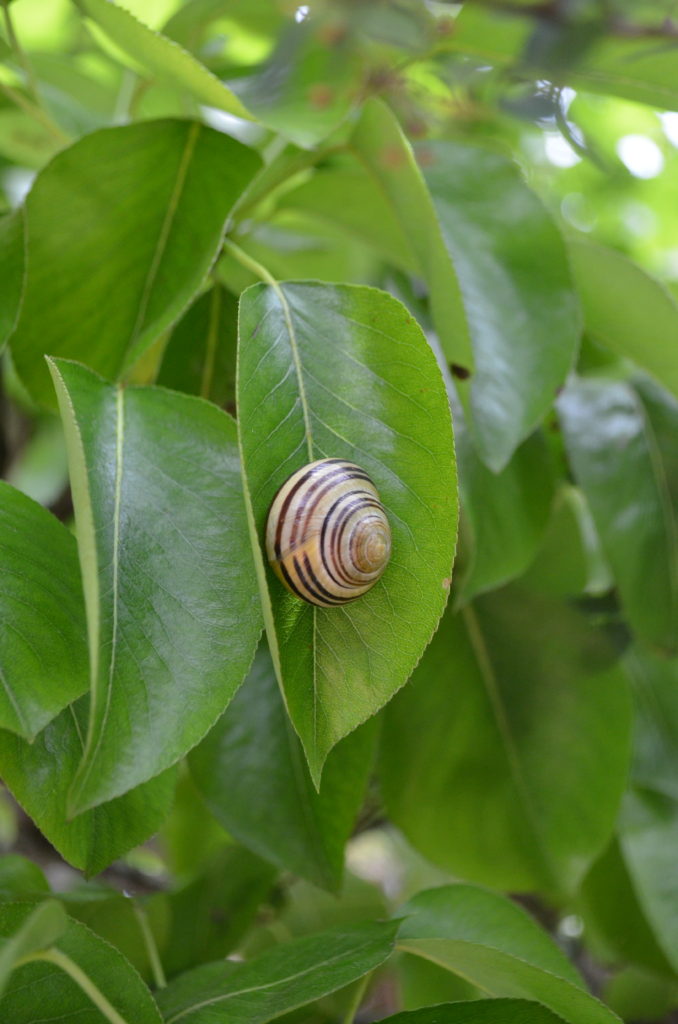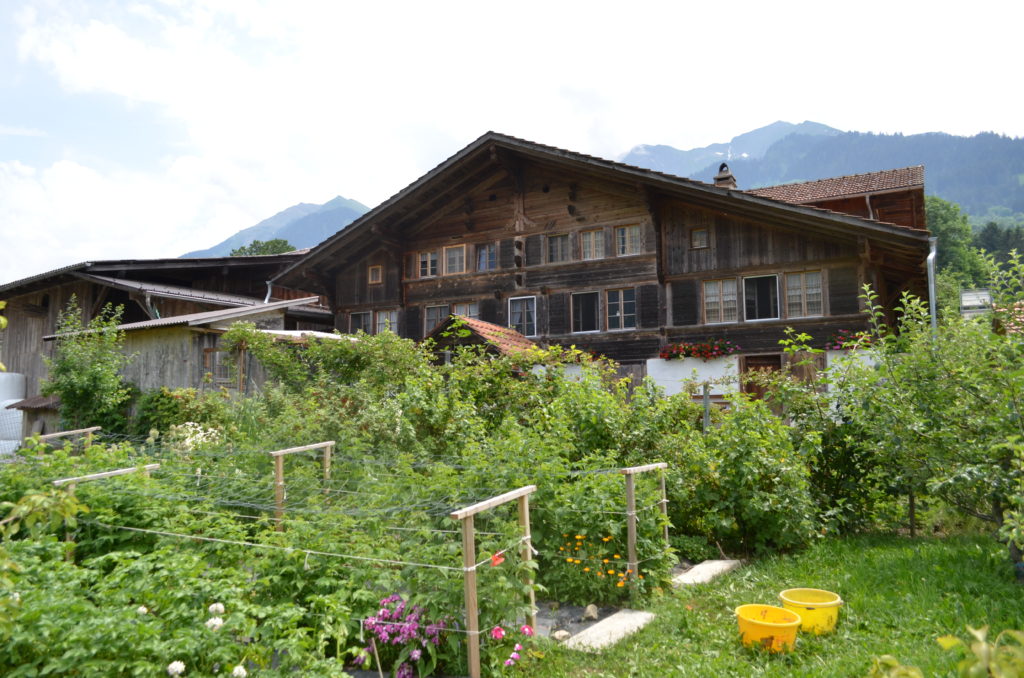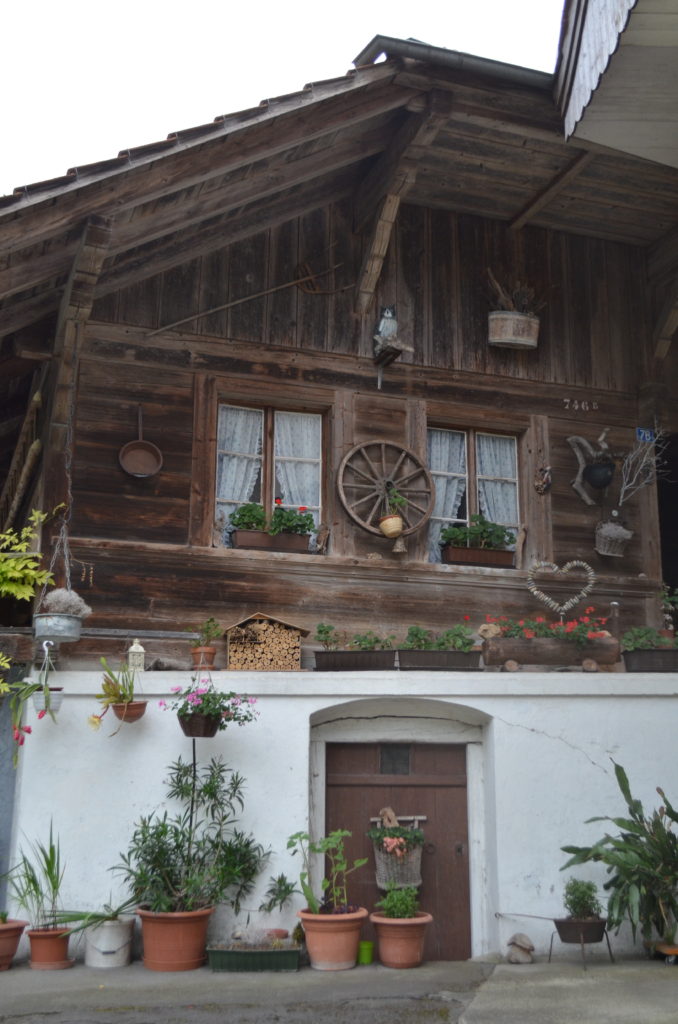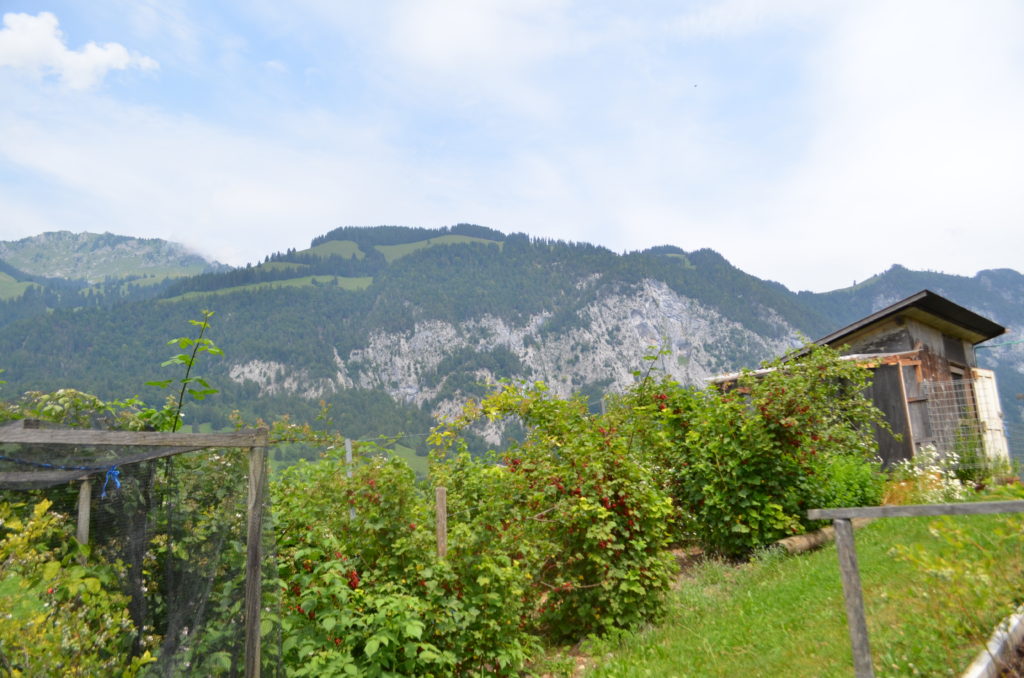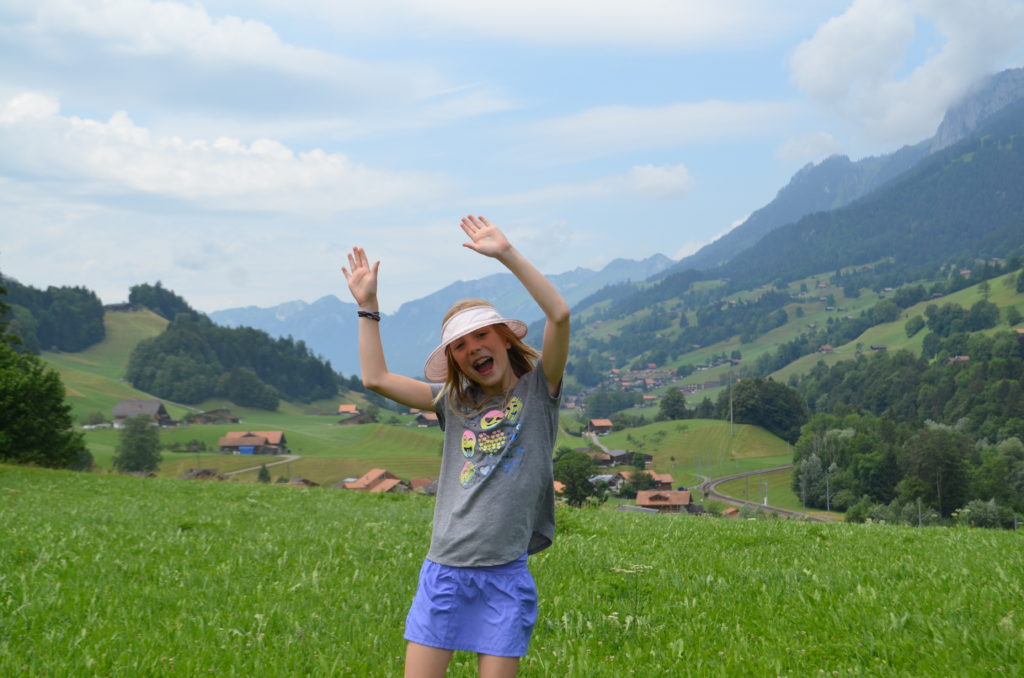“What a strange choice,” Rog remarked when I suggested we zip through Bern and Lucerne in order to spend more time in Thun. But when I showed him the pictures, he was in. Thun (pronounced tune) boasts a lake, canals, a castle in town, and another three on Lake Thune, Schloss Oberhofen, Schloss Spiez and Schloss Hunegg. Beyond that is another lake at the base of the Swiss Alps. What’s not to like? Thanks to our VRBO rental in the town of Oey, Thun was only a thirteen-minute drive.
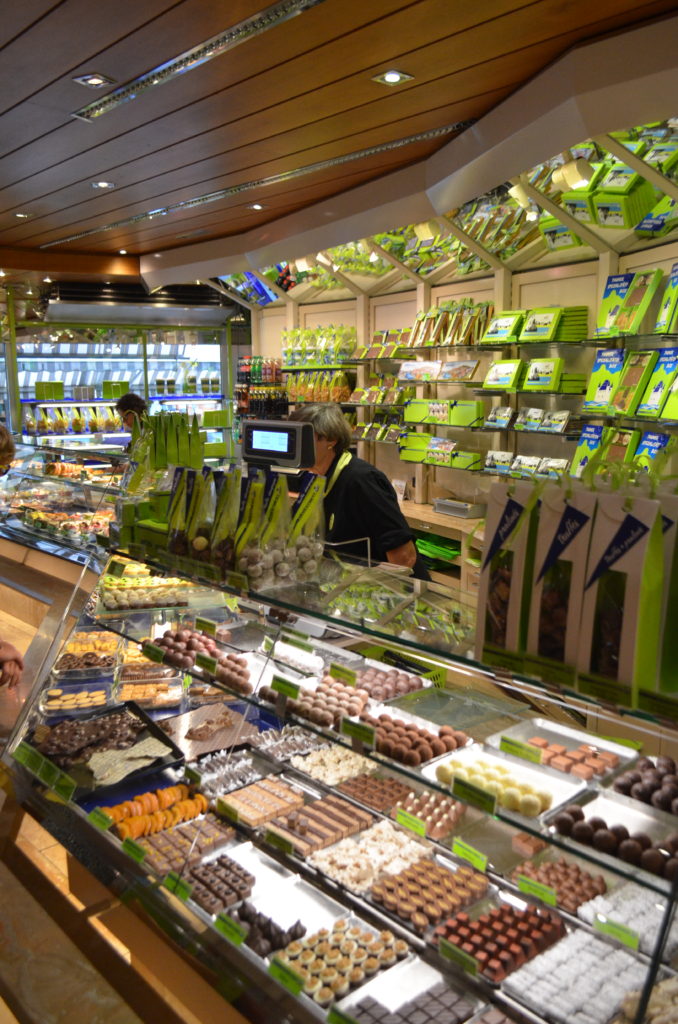
What upgrades a standard street to a culinary mecca? Handmade chocolates, that’s what.
Lake Thun is large enough to boat, sale or swim, and the inlets have perfect glass water for slalom skiing. Homes, hotels and eateries, formal and casual dot the lake itself. It’s far smaller than Lake Coeur d’Alene in terms of length, but is wide and dramatically set in the basin of the alps.
Our first stop was downtown, where several parking structures are within two blocks of the canals and main shopping district. For a few hours is about 10 Euros, the walk through one main lane, across a canal, then another lane, another canal and then you are at the base of the Castle Thun. Be prepared to take multiple shots of both canals and streets, and the best picture of the castle (if not from a drone) is off the canal-road. Straight up and click.
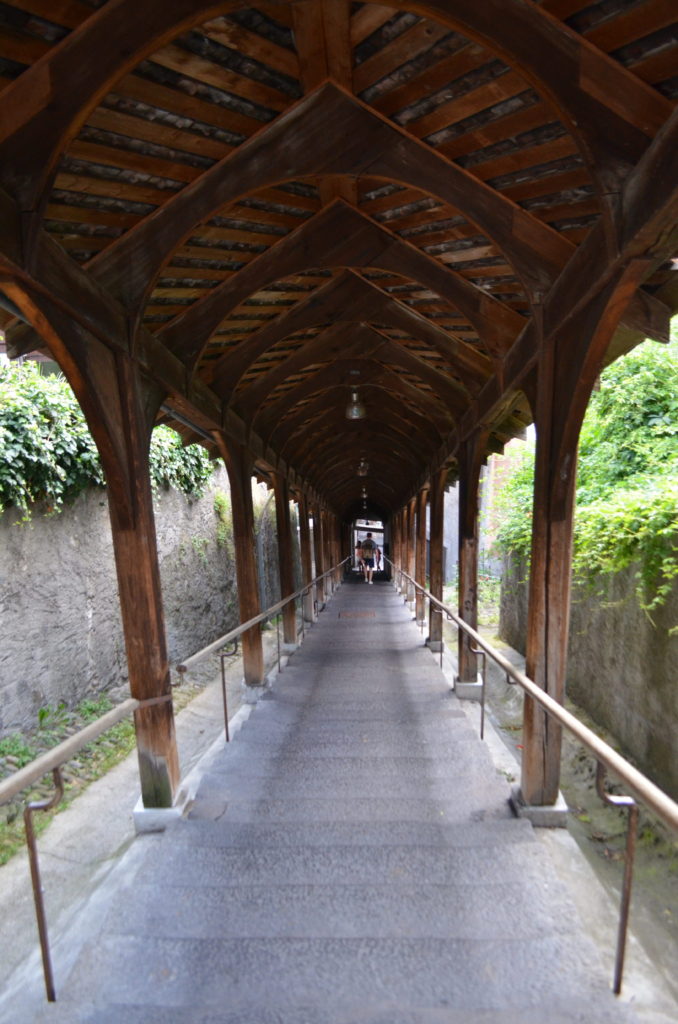
One of three consecutive stairs. You can barely make out the steps due to wear over the 700 years. Slippery as all get out, even when dry.
Then you are off to the stairs the Castle Thun. You can take the uncovered set, or you have a choice of several covered with wood, reminding us all of a medieval movie yet to be made. Old, craggly stones and even older arches above us got us talking about the townsfolk required to make the pilgrimage up the up the stairs.
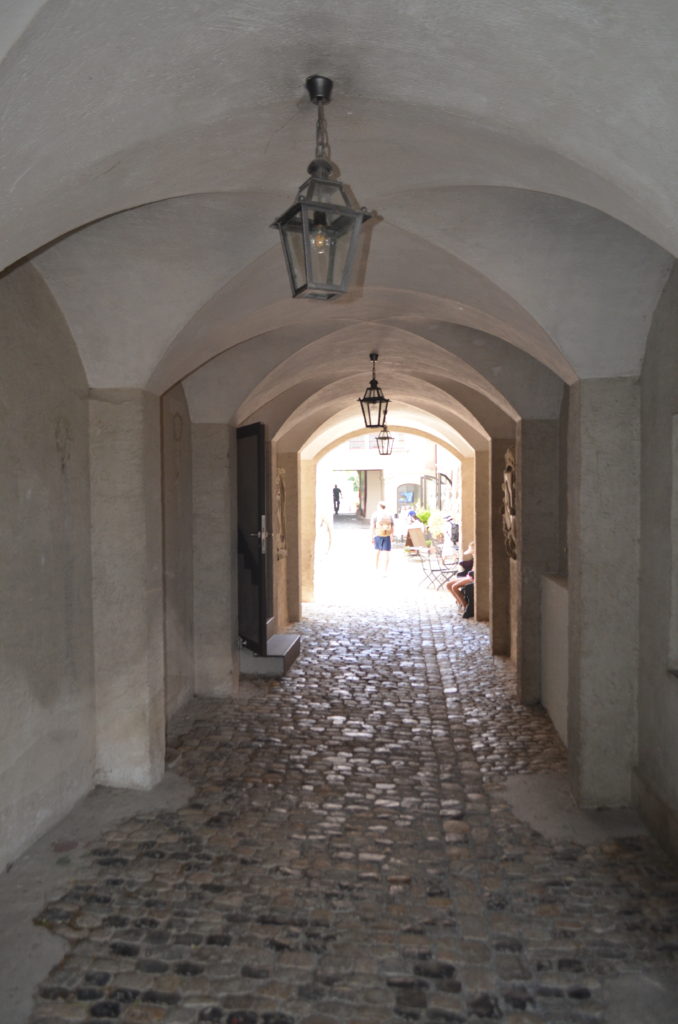
Entrances to castles dramatically vary, from grand and imposing, to efficient, short or long. Castle Thun’s entryway was in between, on the shorter side, solid but not overly grand.
Nearest the castle are several enormous mansions under reconstruction, the sweeping views and majestic courtyards nearly (or some more so) impressive than the castle itself.
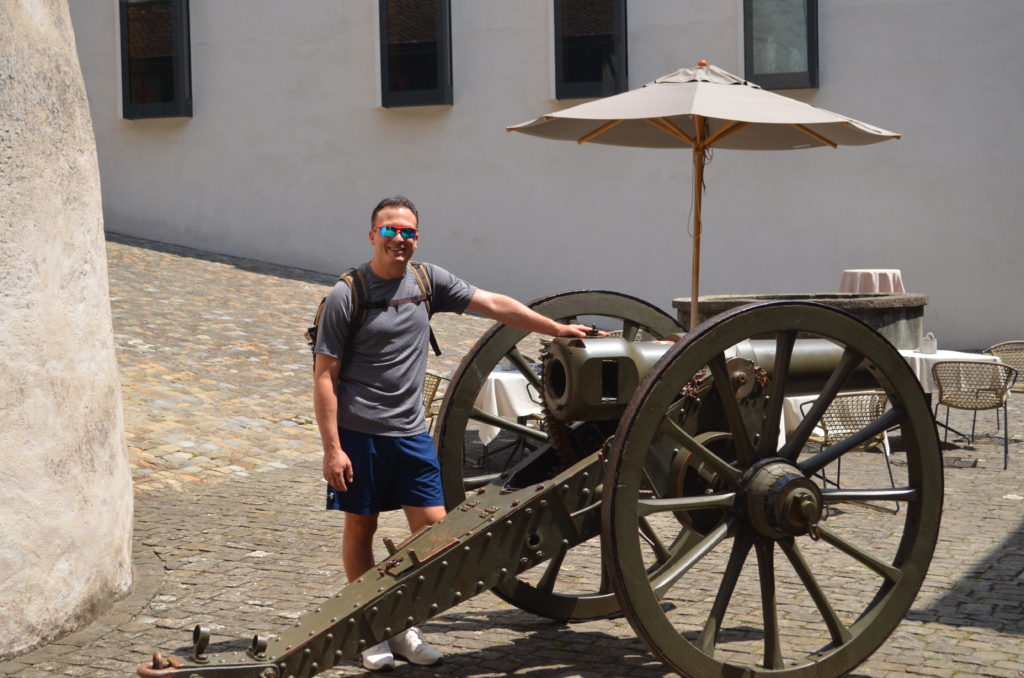
Although the armory is closed off (e.g. non-existent any longer) a few pieces are placed in the small courtyard. Not pictured is a small café to the right of the cannon.
Castle Thun is rather small and unfortunately, a tad stark. My girls called it straight up boring, but that’s all about perspective. It’s been turned into a museum, so if you compare it to the three other in the region, yes, it’s not going to over coats of arms, silver-embroidered dresses or canopied beds of the other castles we’ve toured. The purpose of Thun Castle is to highlight the history of the town, and rotating exhibits. Even so, the walk up is worth the effort as the panoramic view of the Thun is lovely and the descent options of the covered and uncovered, narrow walkways are completely unique to this city.
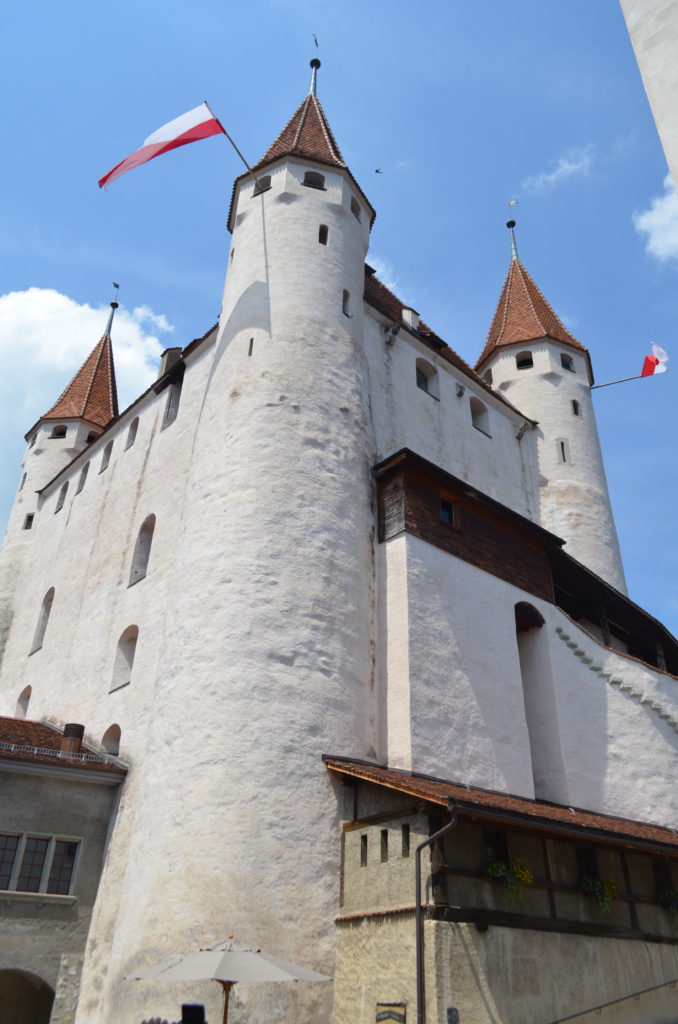
The shot up from the main courtyard. Much of the castle has been turned into a museum, making the outside much more interesting than the inside–for kids, that is.
The Canals
What is pure European would cause heart attacks in the US. Multiple bridges, a quick moving river, men, women and kids jumping, diving and backflipping off the bridges, heads ducking under the lowest bridges, then popping back up, eventually trying to get to the side of the final swimming area or get smushed against the grate at the very end of the canal, where a very placid “lifeguard” is on duty. All in full view of espresso-sipping watchers eating paper-thin crust pizza, usually a cigarette in hand.
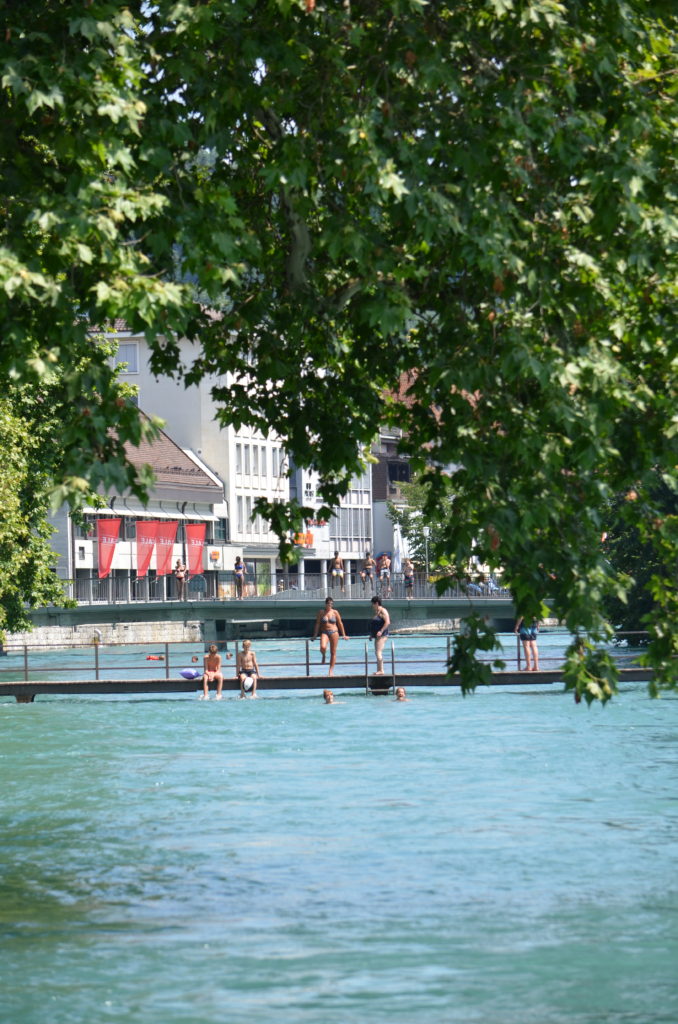
A sight never to be seen in the US–jumping off higher, medium and low-lying bridges, no age limits, no rules. Just fun.
When Rog and Porsche returned from a grocery run, returning with tails of kids and grandmas hurling themselves of bridges, we were skeptical. The water had to be too cold, too dirty and an anomaly. Let me assure you it was anything but. The city charges a fee which is given at the formal swimming/grate area, for I’m not sure what else to call it.
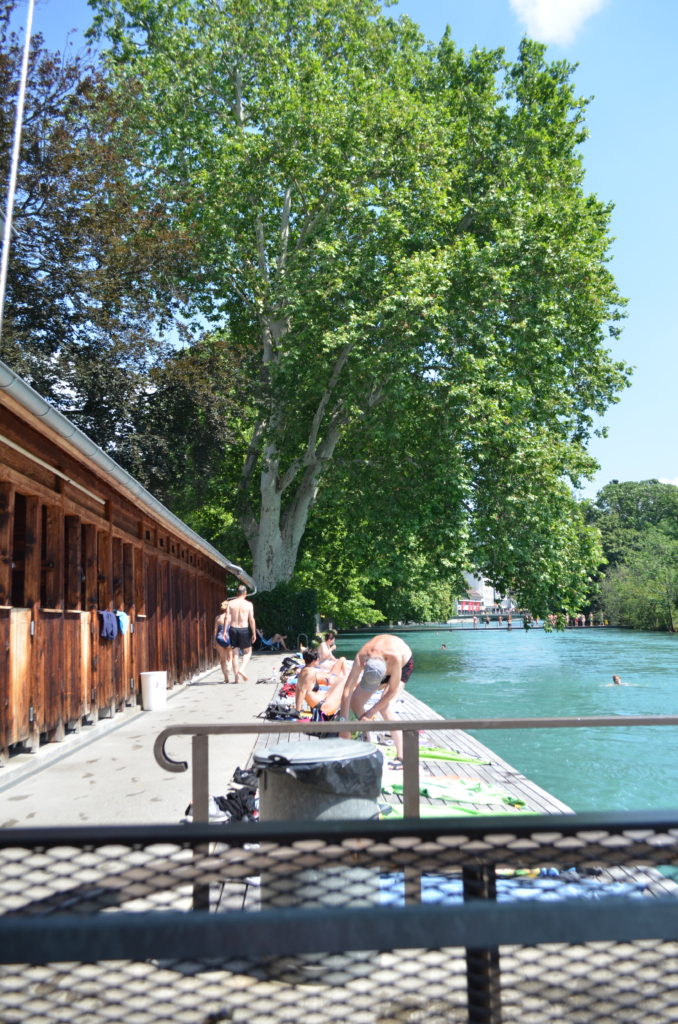
Canal-side sunbathing, dressing rooms (unisex and as you can see, open above the waist.
If you don’t want to end up at the very end, you can jump off further upstream, then swim to the side of the canal and pay no fee. However, the end of the line if you will has changing stalls, washrooms, a café, slide and upper deck on an island separating both canals. It’s just a bit nicer than getting out on the grass—but here, the Swiss don’t even want your feet to get dirty. If you desire to save the 7 Swiss Francs, concrete steps are on the side of the water so you don’t slip in mud. How civilized!
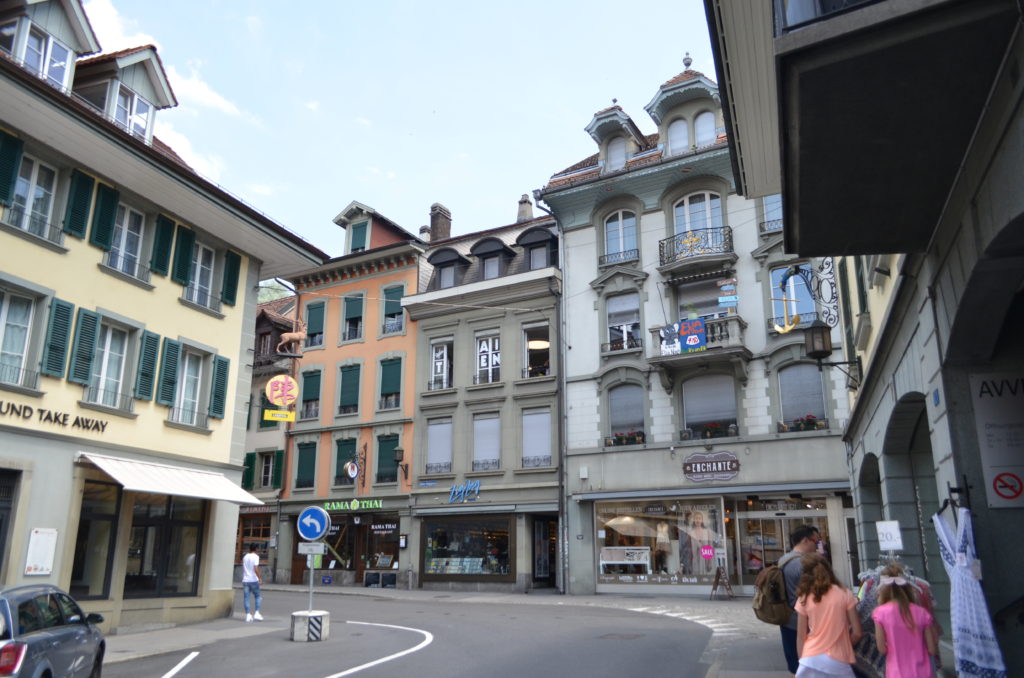
In between the two canals of Thun is this main street where pedestrians own the territory, shops are plentiful and goods are relatively reasonable (for Switzerland, that is).
One night, Rog and I left the girls with the farmer’s wife and children and had a dinner on the canal. It was low-key and romantic, the neon lights of the restaurants on the other side classy and demure, unlike the canals and lights in Amsterdam, if you want a comparison. Here, the tenor during the day even in the shopping district is relaxed and slow-paced, although fun and upbeat. Certain towns have a vibe, and Thun is one I’d describe is calm and happy. We just adored the two days we spent exploring the inner parts of the city, as well as the lake side area.
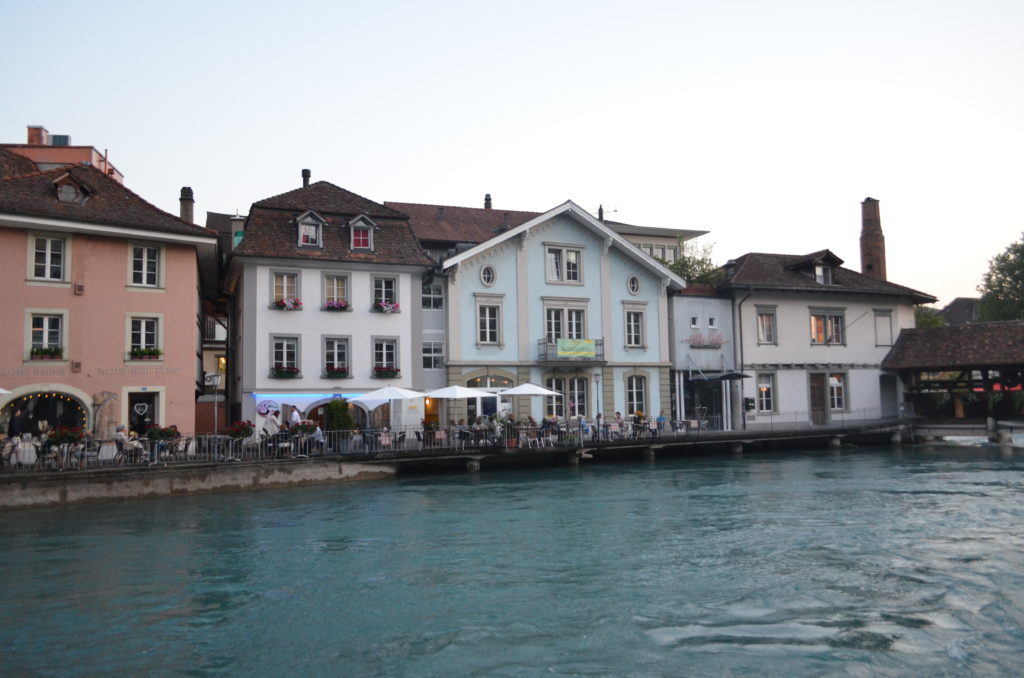
Both sides of the canals in Thun are equally beautiful, offering many eateries of all types.
What I liked best
Thun is easy going, from the driving to eating and recreation. We chose not to visit the several large swimming pool/areas because the lake was surprisingly warm and it didn’t take long to realize we could have spent two weeks in this one town and surrounding area of Interlaken and still wouldn’t have seen a tenth of what the area has to offer.
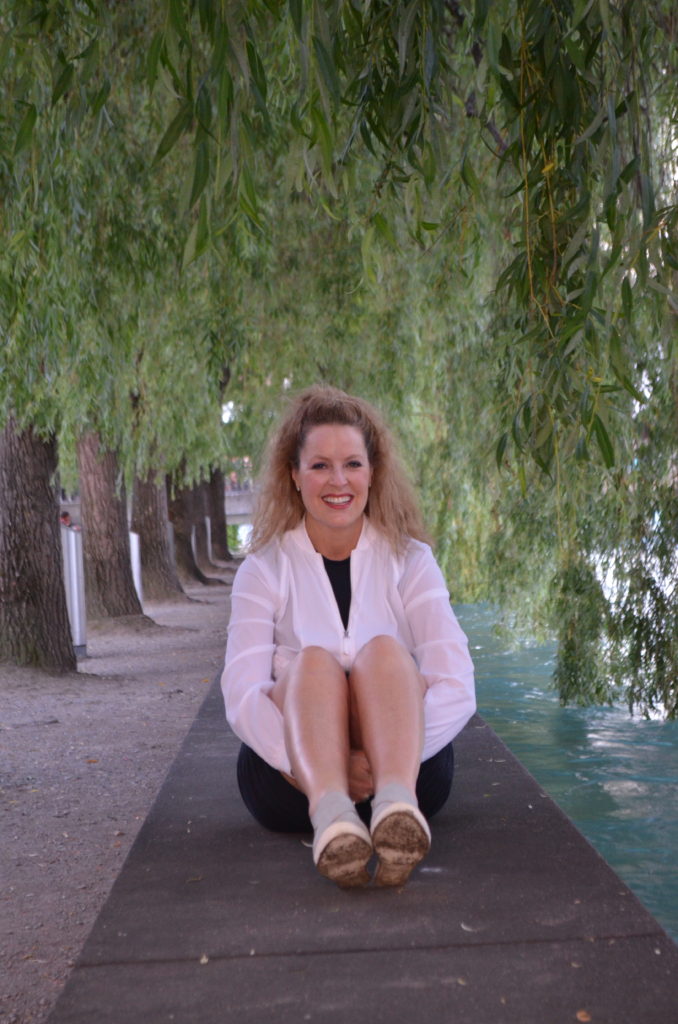
Tree lined, gravel walkways line the canals of Thun.
What I liked least
Knowing that when I return home, I’m going to feel a slight depression that nothing we have is as well taken care of, protected and preserved as it is here. The Swiss are so fastidious, whether it’s the backyard, the pavement of a tunnel, or the common parking space, the grounds, walls and surfaces glisten. No graffiti, not desecration of public space; its divine.
Recommendation
Book more than four days in the Interlaken area. We had five and wish we would have had ten. And this blog only covers the town itself, not the Alps!
Footnote
“Thoone? Toon? Thune? How do you even pronounce that?” Rog asked aloud. By the way, the name Thun is pronounced ‘tune,’ as in, singing a tune, we were informed by a local, making it clear we weren’t the first and won’t be the last visitors to woefully mangle the town’s name.
